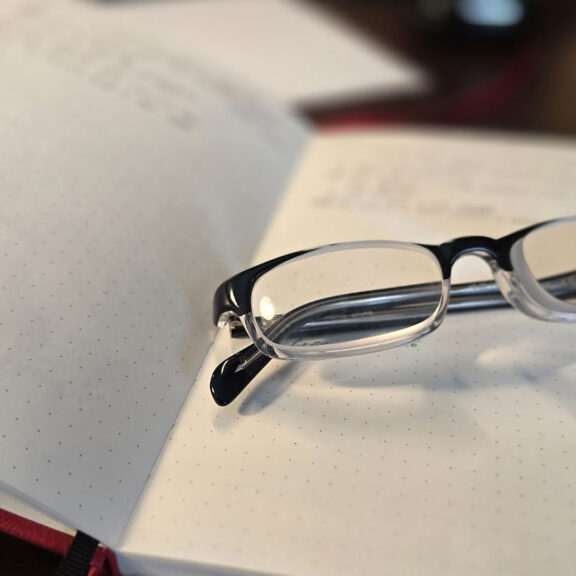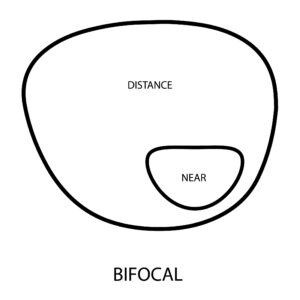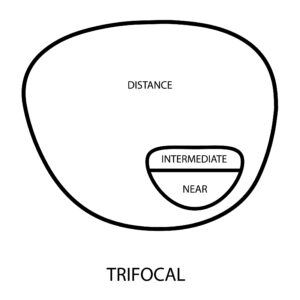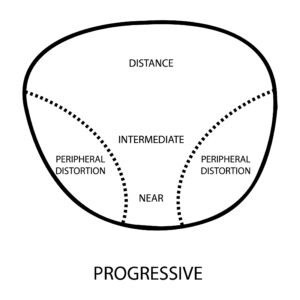How do bifocals work?
When you get older, your body doesn’t always work the way it used to - and your eyes are no exception.
Let’s break down bifocals, progressives and the different ways we use them to keep your patient’s vision clear as their eyes age.
Your Eye’s Built-In Autofocus
Inside your eye is the crystalline lens. When you’re young, this lens changes shape to switch focus from far to near - just like an automatic zoom on a camera. This process is called accommodation.
But with age (often starting in your 40s), the lens stiffens and loses flexibility. That’s why reading up close becomes a struggle - and that’s when you hear about add powers and bifocals.
What Does an Add Power Do?
The “add power” is the extra boost your glasses give you for near work - offsetting the accommodation the eye can’t do anymore.
How Add Powers Are Chosen
There’s a lazy way and a right way to prescribe an add power:
The Lazy Way:
You just pick a power based on your patient’s age.
- Age 40-44 = +0.75 to +1.00
- Age 45-49 = +1.00 to +1.50
- Age 50-54 = +1.50 to +2.00
- Age 55-59 = +2.00 to +2.25
- Age 60-64 =+2.25 to +2.50
- Age 65+ = +2.5 or higher
The Right Way:
A proper test with the reading material at 16 inches. You try different add powers - just like the familiar “Which is better, 1 or 2?” - and finds what truly works for the patient.
Do Higher Add Powers Help?

Sometimes. It depends on what the patient is trying to do.
If they inspects tiny details - like coins or jewelry - they may need a stronger add for closer, finer work.
But there’s a trade-off: The stronger the add, the closer they’ll need to hold their work.
For example:
- Normal add: +2.00 → clear at 16 inches
- Stronger add: +4.00 → clear at 8 inches
So stronger isn’t always better. It must match the patient’s needs.
Reading vs. Computer Work
Standard add powers are designed for about 16 inches - great for books, not always for screens. If your patient spends hours at a computer, they may benefit from a lower add that shifts their focus comfortably to intermediate distances (like 24–30 inches).
Not every eye exam asks about this, but asking your patient how they use their glasses should really be standard practice.
Types of Multifocals
When we say bifocals, we really mean the whole family of multifocals - lenses with two or more focus points.
Classic Bifocals
Bifocals have two fixed focus areas:
- Top: Distance
- Bottom: Near
To read, you look through the lower segment. To see far, you look straight ahead.

Trifocals
When the accommodation drops even more, trifocals add a third zone:
- Top: Distance
- Middle: Intermediate (like computer range)
- Bottom: Near
Three distinct focus points in one lens.

Progressive Addition Lenses (PALs)
Today’s most popular multifocal is the progressive lens. Instead of fixed segments, a progressive lens offers a smooth, gradual shift:
- Top: Distance
- Middle: Intermediate
- Bottom: Near
You move your eyes or tilt your head slightly to find the sweet spot for any distance.

Not All Progressives Are the Same
There are thousands of progressive designs. Each claims to be the “best” - and certain designs work for certain people.
If you’re switching brands or designs and things feel off for the patient, that’s normal. They’ve simply adapted to their old lens design. Switching needs a little patience (and sometimes fine-tuning). Or, better yet, don't switch the design if their old one is working for them.
Specialty & Task-Specific Lenses
One size does not fit all.
- If your patient mostly works at a computer, we can make a lens that has intermediate at the top and near at the bottom - no distance zone at all.
- If their work is up-close and detailed, we can boost the add power for magnification - just know they’ll have to hold things closer.

The Bottom Line
Eyes will age, but modern optics can keep vision clear and comfortable. From basic bifocals to advanced custom progressives, the key is matching the lens to your patient’s real-life needs.
